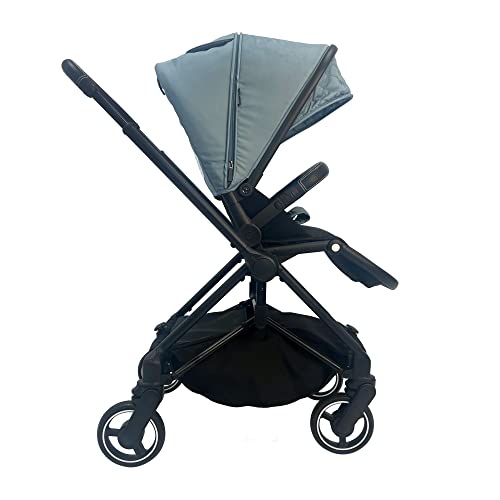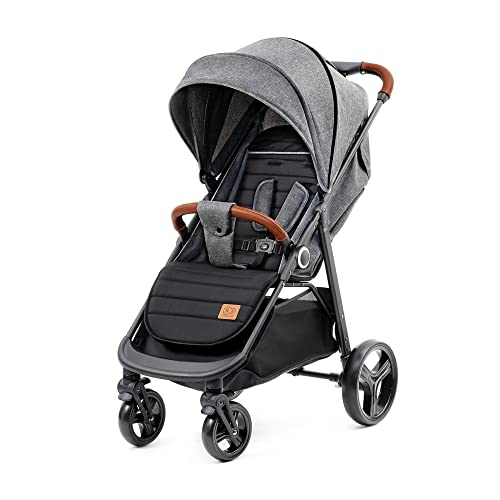Parent Facing Pram Tools To Streamline Your Everyday Lifethe Only Pare…
페이지 정보
작성자 Everette 댓글 0건 조회 3회 작성일 24-11-09 01:11본문
 Monitor Your Little One's Wellbeing With a Parent Facing Pram
Monitor Your Little One's Wellbeing With a Parent Facing PramWhen your baby is cuddled up in a parent facing pram, you can observe their comfort and wellbeing easily. This is particularly useful on busy days.
A study by the University of Dundee found babies in buggies that were face-to-face had twice as many conversations, had more fun and lower heart rates, all of which indicate that they were less stressed.
Peace of Mind
A parent facing pram is a great way to ensure your baby's safety is secure. The seat will be secured with a five-point harness, which will protect your baby from any injuries.
A high-quality pram will also come with a large shopping basket to take care of all the baby's needs so that you don't need to think about where to store all the extra items. Having the right accessories is essential to ensure that your child feel comfortable throughout their travels, such as a footmuff (check that they're compatible with a 5-point harness) and a pram and car seat liner to protect against rain or sun.
When you are choosing a pushchair for your child's new arrival it is essential to test drive it and find the right model for your child and yourself. Look for models with swivel wheels for manoeuvrability and adjustable handlebars to ensure all members of the family can use it.
A safety harness is crucial for parents who are worried about their baby falling out of the buggy. It will prevent your child from escaping the seat, and is a great option to keep them in close proximity in the event of an emergency.
Some experts for babies recommend waiting until the baby is 6 months old old to use a stroller that faces the front however this is contingent on the baby's developmental milestones. But, some babies will be ready to face the world earlier, particularly those who are interested and eager to discover the world around them.
Some parents may be concerned that their child may develop a flat area in the back of their head while spending time in a parent facing pram, but this is nothing to worry about. Auckland osteopath Julia Griffiths suggests that babies need to spend a lot of time lying down to strengthen their skull muscles. this can often be accomplished using a car in a parent facing position, alongside being supervised during Tummy time.
Bonding Enhances
If you've picked a pram with a carrycot, or are choosing a pushchair, the direction that your baby is facing when out and about is something to be aware of. It may appear to be a minor thing but it can have a significant impact on your baby's development and interaction with you while out and about.
A new study has found that babies in away-facing buggies are less likely to engage in conversation or laugh with their parents as compared to those who choose an adult-facing pushchair. The study involved 2,722 kids with their mothers in 60 cities as well as another study that concentrated on 20 mothers and their children. The results show that babies who are in a front-facing buggy with their parents are twice as likely to be smiling at each other than those who are in a buggy that is away from the parents. The reason for this is that when your baby is able to see you, they are more engaged and eager to share their experience with you, promoting the bonding process and fostering conversation.
Babies are able to learn about the world around them, and facing one another while doing it can help them develop and build bonds. It also lets you show them things, such as buses and playgrounds, or flowers that they might not have noticed otherwise.
It is crucial to keep in mind that your child should be able to sit independently before turning into a pushchair that faces the front. Children younger than this may struggle to cope with the change and might be more distressed as they have to move from an inward to an outward position.
The best way to make sure your child is prepared for the transition is to test them by a medical professional. They can ensure that your child's muscle and bones are strong enough to withstand it, and ensure that they haven't developed any hyper-sensitive spots. This test is especially important if your child has been using your pushchair from birth or if you have previously used a pram that had a rear-facing seat. A health professional can also help you determine if it is safe for your child to move into an infant pushchair that faces towards the forward.
Better Eye Contact
One of the best benefits of having a parent facing pram is being able to keep eye contact with your child. This is particularly important for newborns and infants since they are learning about the world around them. It's also a chance to talk to them and play with them, which helps them to learn the names of things they see and improves their language development.
According to studies, babies who look at their parents are more likely to smile and speak to them than those who look away. This is because they're taking in the sounds and images of their surroundings, which helps them understand what's going on around them. Eye contact can also make it easier for parents and babies to communicate. This helps soothe the infant and allow him to calm down.
Bring a toy for travel with you for your child to play with when they are in the pushchair. These toys stimulate the brain and can make children smile. These toys can help your child recognize your voice which is important to develop their cognitive abilities.
Babies are fascinated by the world around them and exploring their surroundings. But, as they get older and more active, they may be able to sit forward in their pushchair. If this is true it's worth considering a front-facing stroller or pram from our collection.
It's recommended to add a footmuff a few months after switching to a pushchair facing forward. This will keep your baby warm. Find a model that can be attached and removed as needed and is compatible with your baby's car seat or crib. It's also a good idea to buy a distinctive travel toy that will allow your baby to identify their own pram while out and out and about.
Checking your baby's head and neck alignment is the best way to make sure that their posture for pushing is right. If the front of the pushchair is tilted upwards, their head and neck are pushing against it. This is not a safe practice.
Easier Monitoring
The comforting sight of your child's face in a parent facing pram lets you monitor them more closely. You can see the signs that your baby is sleepy, upset, upset, or cold. You can also tell if their hat or socks are missing. Being able to see children on your lap makes it easier to talk to them because they can look at you and hear your voice.
This is crucial for infants who have difficulties with language and speech as it stimulates them. It's also a great way to teach your child about the world around them, such as when you talk about buses or flowers. It is also a good opportunity for you to sing to them, especially if they like singing!
Many children love to talk to their parents when they're parent facing, and there are a lot of studies that prove this. This study by Dundee University, for example, found that babies talked twice more in a pushchair facing forward than one facing backwards. The same study found that babies who's faces were not seen by their parents displayed more fluctuations in heart rate, which indicated that they felt stressed and anxious. Babies who had their faces visible to them however, had heart rates that were more stable and relaxed.
This doesn't mean that every child has to be changed to a forward-facing stroller immediately. It is recommended to wait until the child is six months old. At this point, that their bones and muscles have fully developed to enable them to safely undergo the transition.
 For this reason, parents often choose to keep their children in a cheap stroller with a parent-facing seat until they reach. There are many excellent compact strollers and pushing chairs that allow you switch between two positions so that you can keep your child parent-facing as long as you like. Just remember to check the compatibility of your buggy or stroller with the car seat you're planning to use, as this can vary between models.
For this reason, parents often choose to keep their children in a cheap stroller with a parent-facing seat until they reach. There are many excellent compact strollers and pushing chairs that allow you switch between two positions so that you can keep your child parent-facing as long as you like. Just remember to check the compatibility of your buggy or stroller with the car seat you're planning to use, as this can vary between models.댓글목록
등록된 댓글이 없습니다.